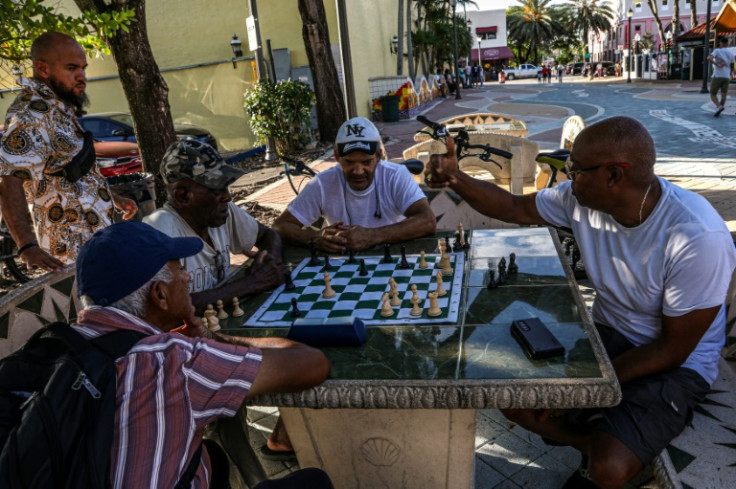In Miami's Melting Pot, A Dialect Of English Emerges

In Miami, Spanish rules. One hears it everywhere, with hundreds of thousands of immigrants speaking it even as they attain fluency in English.
The result, though, is a spoken English with enough variants that a new study deems it a dialect.
It is an English that contains literal translations from Spanish that have been incorporated into daily language, says Phillip Carter, a sociolinguist at Florida International University (FIU), author of the study.
In Miami, one commonly hears "get down from the car" instead of "get out of the car," a literal translation of "bajarse del carro" in Spanish. Another literal translation is "put the light" instead of "turn on the light."
Such odd turns of phrase can befuddle English speakers from elsewhere.
Immigrants habitually use literal translations in their host countries but such usage tends to disappear in subsequent generations, Carter tells AFP.
His study, conducted after many interviews of Latinos, found that not to be the case in South Florida.
"It was interesting to see that certain of these expressions got passed down to their children and to their grandchildren," says Carter, 43.
"Some things stick around. And for that reason, we were referring to this as a dialect, something that people learn as their first language that includes certain of these features influenced from Spanish."
According to the US Census, 69.1 percent of the population in Miami-Dade County is Hispanic. The daily coexistence of English and Spanish began with the arrival of Cuban migrants after the 1959 Revolution on the island and continued with waves of migrants from other Latin countries, particularly Colombia and Venezuela.
This linguistic synchrony, moving from one language to the other constantly, sometimes in the same sentence, gave rise to Spanglish, a Spanish full of Anglicisms and literal translations that is spoken widely in Spanish-speaking homes across the United States.
"There's not a single language that doesn't have words borrowed from another language," Carter says. "When you have two languages spoken by most of the population, you're going to have a lot of interesting language contact happening."
For Ody Feinberg, the conclusions of the study are not surprising.
"I see it a lot every day because people start talking to me in English, and then all of a sudden they bust out and say: 'You speak Spanish.' And then they keep mixing it up back and forth. It's kind of comical," says Feinberg, 62, who advises clients for Louis Vuitton in Miami.
For 47-year-old Camilo Mejia, who works in a nonprofit, the cultural and linguistic diversity of Miami are to be celebrated.
"Here, you not only learn about other cultures but learn about a culture that's the result of many people from different backgrounds coming together and living together and creating new things together," he says.

© Copyright AFP 2024. All rights reserved.







